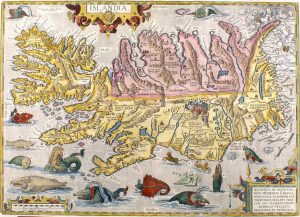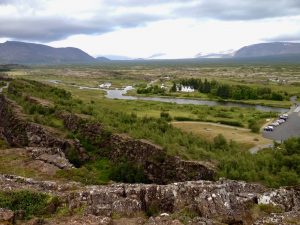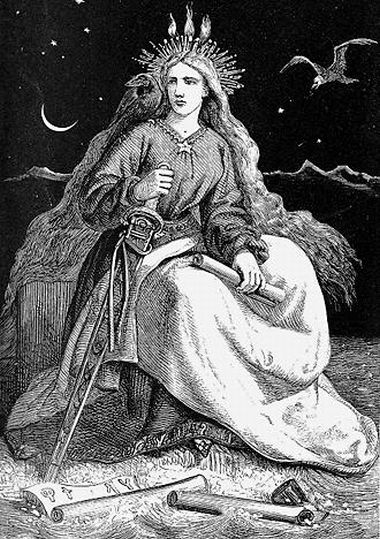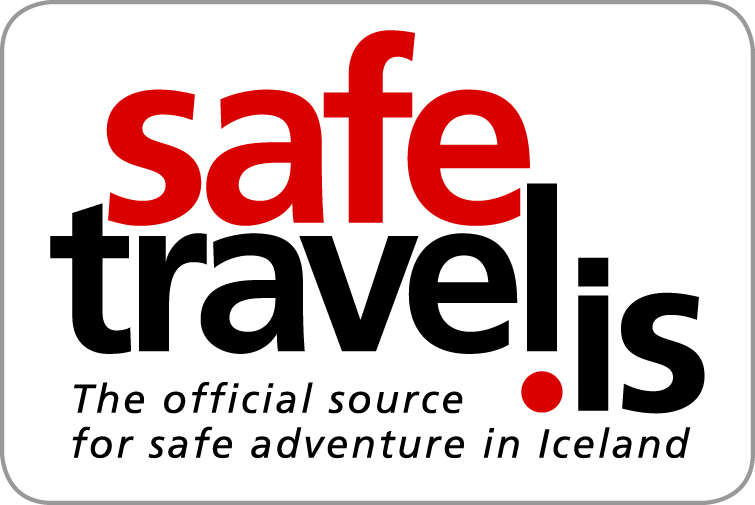Icelandic Sovereignty Day
10 Important Dates in Icelandic History
Four days from now, December 1st, is Iceland’s sovereignty day! That day in 1918 Iceland became almost completely independent from Denmark. There is a common misconception, even in Iceland, that the Danish didn’t treat us very well. In fact, they treated us just as well as their own people. It’s just that life in the 17th, 18th and 19th centuries wasn’t that great and it was easy to blame the foreign rulers. Here are 10 important dates from Icelandic political history. (It‘s more fun than it sounds, I swear!)

Old map of Iceland.
Photo: Wikimedia Commons / File:Island_map_gudbrandur.jpg
874 – The first settlers come to Iceland
There were some people here before the first settlers but they weren‘t here all year round so they don‘t really count. The year 874 is the traditional date based on literary sources, but recent archaeological findings show that settlement probably began a bit earlier. This settlement was Nordic (well at least the chief settlers were), which we know because the building styles and items found are similar to Norse settlements in Scandinavia and on some small northern British islands.
930 – The establishment of the Icelandic parliament
The British say that their parliament is so old that it could be called the mother of other parliaments. Well then the Icelandic parliament is the grandmother.
In the beginning there was no king in Iceland. We had a bunch of different chiefs or leaders in different parts of the country and they decided to work together to govern it. The parliament they established, called Althing (is. Alþingi), has been active in Iceland ever since and is the oldest parliament in the world, although there was a brief period of some 50 years where it was in disuse. The parliament was located at Þingvellir, now a famous national park and UNESCO heritage site. It was moved to Reykjavík during the 18th century. However, Þingvellir is such a meaningful part of the Icelandic national identity that many wanted to move the parliament back there during the independence movement.
Find out how to get to Þingvellir from Arctic Nature Hotel here.

Þingvellir National Park. Photo: Arctic Nature Hotel.
1262-1264 – Iceland becomes a Norwegian state
Iceland always had strong connections with the other Nordic states. Out of all the other countries, Norway had most sway in Iceland and the king of Norway wasn‘t very happy with all the warfare going on in Iceland in the 13th century. In retrospect, the 13th century was probably the bloodiest Iceland has ever had. The legal system was crumbling, there was no real executive power, and a handful of clans was quickly taking over the entire country. So the king of Norway sent a contract to Iceland for complete control and it was discussed and accepted at the Althing. It took awhile to become a part of Norway since the Icelandic leaders all had equal powers and all of them had to sign the agreement, called the Old Covenant (is. Gamli sáttmáli), but eventually Iceland became a Norwegian state.
1428 – Iceland becomes part of Denmark
This date is debatable because Iceland becoming a part of Denmark was a slow process. The kingdoms of Norway and Denmark were combined in the 14th century and there was some fusion and division going on with the kingdoms in Scandinavia at the time, but in 1428 that Denmark officially governed over Norway. Iceland kind of just went along with it.
1662 – Denmark controls everything
Up until this point Iceland had pretty much governed itself even though it belonged to some other country by name. But in 1662 Iceland officially accepted the Danish kings and Danish rule, making the ancient Althing essentially powerless. From then on Denmark had complete control over Iceland. We did, however, keep the tradition of having to formally accept the Danish king. If we did not accept the king then he would technically not govern Iceland, but this was only a formality and didn’t have any real power.

The Danish Kingdom in the 19th Century. Photo: www.islandskort.is
1809 – Iceland gets its own king. For like two months
Icelanders were never very happy with Danish rule. They felt like the Danish were treating them badly, and sure, living in Iceland was no piece of cake, but living on the Danish Isles wasn‘t really all that great either. Basically we were all pretty much in the same boat but Icelanders were bitter cause the king wasn‘t Icelandic. The „fight“ for independence didn‘t really begin until later in the 19th century. However, in 1809 a Danish man named Jørgen Jørgensen declared that Iceland was independent and he its king. Why? Just because. Didn‘t last very long though, just two months.
1848 – Denmark doesn‘t control everything anymore.
The Danish monarchy gave away its autocracy and with that the independence movement officially started in Iceland. The independence movement in Iceland was very peaceful. It was mostly political and cultural, for example in literature. From this period there are a lot of poems about Iceland and Icelandic beauty that makes us different from other places, especially Denmark. It’s no coincidence that mountains feature heavily in Icelandic poetry with Denmark being a very flat country. This is also when we started writing lovely poems about winter rather than the typical spring, and the The Lady of the Mountain and King Winter became a motifs that are still very much a part of the national psyche.

The Lady of the Mountain;
the national personification of Iceland.
Photo: Wikimedia Commons / Image:Arnason-front.jpg
1851 – Icelanders want to be completely independent from Denmark
This is when a very famous meeting took place between Icelandic politicians and the representatives of the Danish king. The Icelandic politicians were not happy with the king’s terms and views on Icelandic independence and they stood up and said, “We all protest!” which is now a famous quote in Iceland. It’s not really that important in a historical context, but in a cultural context it really is, because it was the first time we really stood up to Denmark (and because we have a quote. Quotes are important).

The National Assembly of 1851. Photo: www.jonshus.dk
1874 – Iceland gets a constitution
It was a gift. From the Danish king. That totally counts as some sort of independence, right? The date was no coincidence, as it also marked the 1000 year anniversary of Icelandic settlement. The constitution paved the way for home rule, which we got in 1904. That’s also when we got our first Minister of Iceland, Hannes Hafstein. The constitution we have in Iceland today is essentially the same one as we got in 1874. Although it has, of course, been modernized.
The king did more than give us a constitution. He also came to Iceland himself and travelled a bit, for example to Geysir, which is now a part of the famous Golden Circle. In the Geysir area you can see a large stone enscripted with the king’s symbol and the date 1874.
Find out how to get to Geysir from Arctic Nature Hotel here.
1918 – We‘re freeee! You already know what I‘m talking about here
December 1st 1918 Iceland became a Sovereign state. We controlled domestic affairs but Denmark was still responsible for Icelandic foreign affairs and defense interests. With this new Act, both Iceland and Denmark promised to press pause on the whole independence affair until 1940. In 1940 either country was supposed to be able to start negotiations again for three years, and after that either country could single-handedly rip up the contract. Which Iceland did.
Bonus date:
1944 – We‘re freeee! Completely this time. Yay for independence! Virtually everyone in Iceland wanted to be independent by this point. 98.4% of Icelanders showed up to vote for if we should be independent or not, and 99,5% of those voters voting for independence. We did feel a bit guilty towards the Danish though. Because there was a very serious situation in Denmark (and the world) at the time and the Danish were unable to negotiate with us. But it’s all good now and we’re all still good friends.
Did you know that Iceland used to belong to Denmark and Norway?









